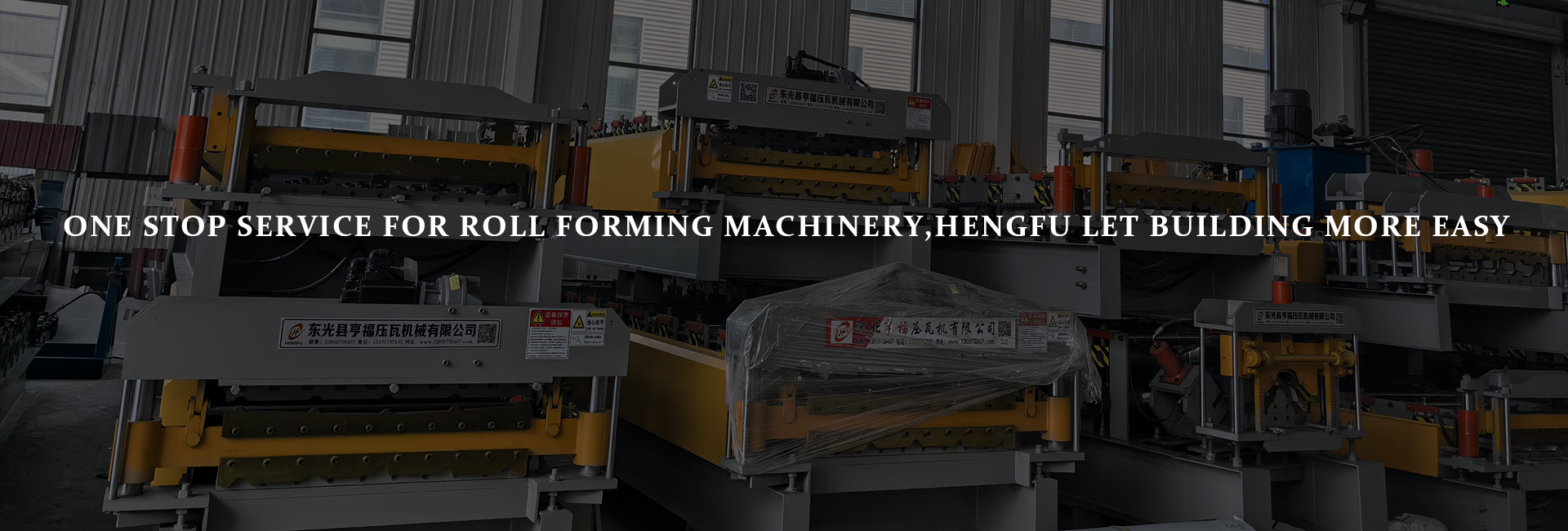In the process of the construction industry's shift towards industrialization and standardization, roof panel forming machines, as the core equipment for metal roofing production, have their selection directly impacting construction efficiency, cost control, and project quality. With a diverse range of roof panel forming machines available on the market, how can one choose equipment that aligns with their own production needs from options such as single-layer vs. double-layer models and semi-automatic vs. fully automatic machines? This article will provide a scientific selection guide by systematically comparing the characteristics, advantages, and applicable scenarios of different types of forming machines.
1. Introduction: The Industry Value of Roof Panel Forming Machine Selection
1.1 Market Growth of Metal Roofs and Selection Needs
With the increase in construction projects such as industrial plants and commercial complexes, metal roofing, due to its lightweight, durability, and aesthetic appeal, has seen a continuous rise in market demand. When faced with projects of varying scales and process requirements, selecting appropriate roof panel forming machines becomes crucial for ensuring construction progress and benefits.
1.2 Traditional Selection Pitfalls and the Advantages of Rational Selection
Traditional selection often overlooks the match between equipment characteristics and project needs, leading to equipment idleness, low efficiency, or cost overruns. Scientific selection not only improves production efficiency and reduces material waste but also lowers equipment maintenance costs, achieving efficient resource utilization.
1.3 Core Focus of This Article: Equipment Comparison and Solution Optimization
By comparing the structures, performances, and applicable scenarios of different types of roof panel forming machines, this article analyzes paths to efficiency enhancement, providing references for users to formulate suitable production solutions.
2. Basic Understanding of Metal Roof Forming Machines
2.1 Equipment Definition and Functional Overview
Roof panel forming machines are specialized devices that process metal sheets into roof panels of specific shapes through rolling processes, covering processes such as sheet feeding, rolling, forming, and fixed-length cutting. They are widely applied in the metal roofing construction of various buildings.
2.2 Analysis of Core Components
Rolling System: Composed of multiple sets of rollers, it realizes sheet pressing through gradual deformation. The design precision and wear resistance of the rolling system determine the forming quality.
Transmission Device: Provides power for the equipment, including components such as motors, gears, and chains. A stable transmission system ensures the continuous operation of the equipment.
Control System: Responsible for parameter setting, operation monitoring, and fault warnings. An intelligent control system can enhance operational convenience and production safety.
2.3 Classification Framework of Mainstream Models
Structurally, they are divided into single-layer forming machines and double-layer forming machines; in terms of the degree of automation, they can be categorized as semi-automatic forming machines and fully automatic forming machines, with different classifications corresponding to different production characteristics and applicable scenarios.
2.4 Impact of Key Technical Parameters
Forming speed determines the output per unit time. The applicability range of sheet materials (material, thickness) limits the equipment's application scenarios. Precision indicators (dimensional errors, surface flatness) affect installation effects. These parameters need to be comprehensively considered during selection.
3. In-Depth Comparison of Different Types of Roof Panel Forming Machines
3.1 Single-Layer Forming Machine vs. Double-Layer Forming Machine
Single-Layer Forming Machine: Relatively simple in structure, it can only produce one panel type at a time, suitable for projects with a single panel type and batch production. Its advantages include low cost and convenient maintenance, making it applicable to small-scale projects or scenarios with fixed panel type demands.
Double-Layer Forming Machine: Integrates the production functions of two panel types and can meet diverse panel type needs through rapid mold switching. It has high equipment utilization and is suitable for large-scale comprehensive projects, but its initial investment and maintenance costs are relatively high.
3.2 Semi-Automatic Forming Machine vs. Fully Automatic Forming Machine
Semi-Automatic Forming Machine: Requires manual assistance for material feeding, parameter adjustment, and discharge. It has high operational flexibility and is suitable for small-scale, customized production. The equipment price is affordable, but it relies on manual operations, with production efficiency and precision being greatly affected by human factors.
Fully Automatic Forming Machine: Achieves full-process automation from material feeding, forming, to discharge, equipped with an intelligent control system that can precisely control production parameters. It has high production efficiency and strong stability, especially suitable for large-scale, standardized production. However, the equipment is complex and has higher technical requirements for operators.
4. Core Mechanisms for Efficiency Enhancement
4.1 Construction Period Optimization through Automated Processes
Fully automatic forming machines operate automatically through preset programs, reducing manual intervention and equipment start-stop times, achieving continuous and efficient production, and significantly shortening project schedules.
4.2 Cost Control through High-Precision Forming
Advanced rolling and cutting systems ensure forming precision, reducing material waste and rework costs caused by dimensional mismatches, and improving overall economic benefits.
4.3 Flexible Production through Multi-Specification Compatibility
Double-layer and fully automatic forming machines support the processing of multi-specification sheets, reducing mold change frequencies and debugging times, lowering comprehensive production costs, and meeting diverse production needs.
4.4 Simplified Operations through Intelligent Control
An intelligent control system can automatically optimize operational parameters, monitor equipment status in real-time, and reduce operational difficulty through a visual interface, enhancing production management efficiency.
5. Recommendations for Selection and Use
5.1 Precise Selection Based on Project Scale
Small-Scale Projects: Prioritize semi-automatic single-layer forming machines to meet basic production needs while controlling costs.
Medium-Scale Projects: Double-layer semi-automatic forming machines can balance diverse needs and cost inputs; fully automatic single-layer forming machines are suitable for single panel type production with high efficiency requirements.
Large-Scale Projects: Fully automatic double-layer forming machines, with their efficient and multi-functional characteristics, are the first choice for large-scale, multi-panel type projects.
5.2 Important Considerations for Brand and After-Sales Service
Choose brands with technological R&D capabilities and good reputations, as their equipment has more guarantees in terms of quality stability and technological updates. A comprehensive after-sales service system can provide timely technical support and maintenance services, reducing downtime losses.
5.3 Daily Maintenance and Fault Prevention
Regularly clean, lubricate, and inspect equipment components, paying special attention to roller wear, the tightness of transmission components, and the sensitivity of the control system. Strictly follow operating procedures to avoid overloading and违规操作 (non-compliant operations).
5.4 Compliance with Industry Certifications and Safety Standards
When purchasing, confirm whether the equipment has passed industry certifications such as CE and ISO to ensure compliance with safety, quality, and environmental standards, safeguarding production compliance and personnel safety.
6. Industry Trends and Future Prospects
6.1 Intelligent Integration and Upgrades
In the future, roof panel forming machines will deeply integrate AI regulation and IoT technologies, achieving autonomous equipment optimization, remote monitoring, and fault warnings, promoting production towards intelligence and unmanned operation.
6.2 Green and Environmentally Friendly Technological Innovations
Equipment design will place greater emphasis on energy consumption optimization, material recycling, and low-noise operation, meeting the needs of the construction industry's green transformation and reducing the environmental impact of production.
6.3 Modular and Customized Development
To meet differentiated market demands, forming machines will evolve towards modular design. Users can flexibly combine functional modules according to production needs to achieve customized equipment configurations.
7. Conclusion: Scientific Selection Empowering Efficient Production
The selection of roof panel forming machines is a systematic project that requires comprehensive consideration of factors such as project scale, production needs, and cost budgets, weighing the pros and cons of different types of equipment. Through the comparative analysis and selection suggestions in this article, we hope to help you find the most suitable production solution, fully leverage equipment performance, and provide strong support for the efficient and high-quality delivery of construction projects. If you wish to further explore equipment details or obtain personalized selection suggestions, welcome to explore more professional content and embark on a new journey of efficient production.







